4 Signs That Your Wheels Need Truing Desperately!
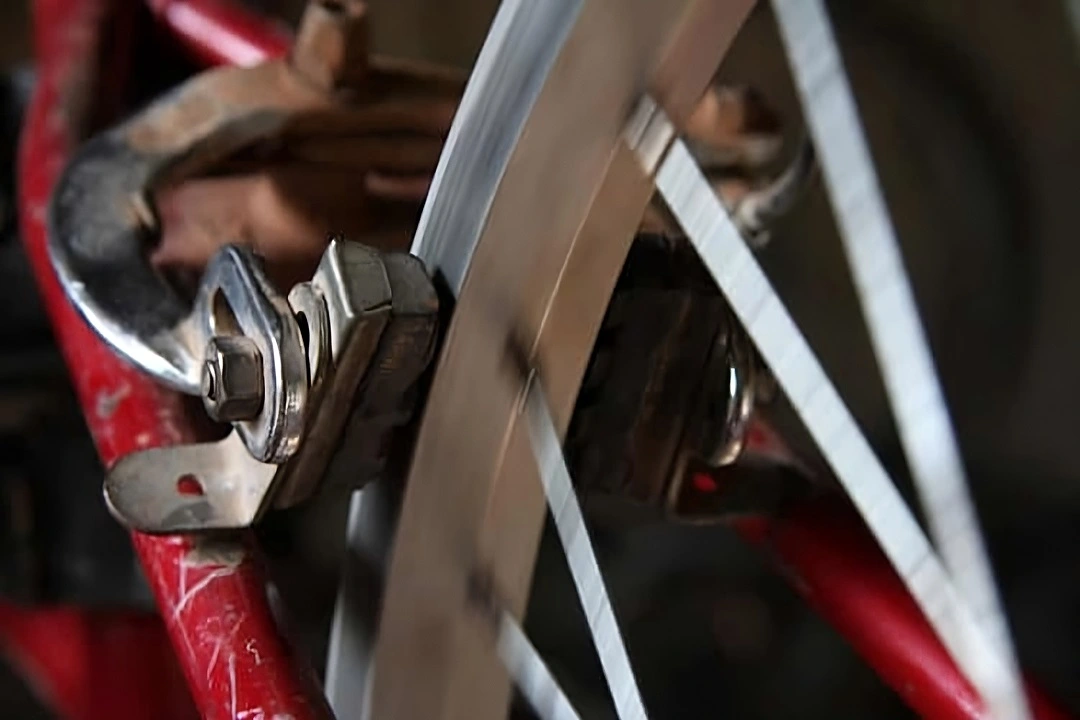
The wheels are the most important components on your bike. They’re big, they’re noticeable, and if they fail, you’re in trouble.
I’m shocked by how many people ride around on floppy wheels with loose spokes. It’s a hazard!
Truing is the process of tightening your spokes. It makes the rim nice and straight and creates a strong structure.
Not sure if your wheels are out of true? Are you willing to bet your life on it? And, are you unsure when to true a bike wheel?
4 signs that your wheels need truing urgently
1) Rattle and Hum: Tighten Those Spokes
For the most part, you shouldn’t hear a lot of ‘rattling’ from your ride.
If you notice a rattling sound when you pull it down from your hangers, or when you cross a fence, take note. It’s a common problem on vintage bicycles.
Try to narrow down the source. Is it the derailleur or chain (the most common source)? Or is it your wheels?
Your wheels should not rattle! It could be several things, but it’s often loose spoke nipples. (It’s what they’re called… go ahead and giggle.)
If your spokes are so loose they rattle, they’re providing virtually no strength to the wheel structure. It’s no better than if that spoke were missing or broken.
It’s a big indicator that your bike wheels need truing. Get thee to thy local bike shop!
2) Rhythmic Rubbing Sound, Brakes Acting Wonky
When you hear that annoying, rhythmic “rub” sound emanating from your wheels, it’s tempting to blame it on your brakes.
There’s a good chance it’s your wheels, actually.
When bike wheel out of true, they lose their perfect shape. The rim will deform and pull to whichever side has more bike spoke tension.
It’s easy to have to happen. A large pothole will do it.
The result is that your wheel will wobble and rub against the brake no matter how much adjustment you do.
The only solution is to tighten the loose bike spokes on the opposite side, providing enough tension to pull the wheel back into shape.
Disclaimer: Most wheels have a tiny amount of wobble, especially over time. It’s normal. You should only be concerned with a serious deformity.
3) The Flintstones Wheel: True Vertically, Too
Another common way that a wheel deforms is vertically. In this scenario, the wheel isn’t perfectly round, so it wobbles up and down while it rolls, like the cars in The Flintstones.
This can affect rim brakes too since the rim will rise and fall as the wheel spins, diminishing contact.
It’s a pretty easy one to diagnose: just flip your bike upside down, rest it on the seat and bars, and give the wheels a spin.
Apart from diminishing your stopping power, a vertically untrue wheel is less efficient. What’s more, it’s an indicator that the strength and rigidity of your wheel are questionable. Bring it in, and get it fixed.
4) Floppy Spokes: Tighten or Replace
You shouldn’t be able to move or wobble your spokes by hand. They should be extremely rigid.
That said, it’s amazing how often I see floppy, wobbly spokes in a wheel.
Even if the wheel is perfectly true, a sagging spoke is a sign of disaster. Your wheel strength is compromised, especially if you’re running a low number of spokes (18 – 28).
There are a few reasons this can happen. Your spoke nipple can be stripped, by disconnecting it from the rim. A collision or crash can cause irreparable damage.
You might say, “It’s still true, it’s fine.” That’s a big mistake. It won’t stay true for long, and neglecting to fix a wobbly spoke could cost you the whole wheel.
Can I True My Own Wheel?
Absolutely! You’ll need to pick up a wheel truing key, which can be had for under $15 at most bike shops. I always keep a key with me on long rides for in situ repairs.
There are several key sizes; be sure to pick up the right size for your bike.
A truing stand can be an immense help, but they’re somewhat expensive and cumbersome. I’d only get one if you’re doing a lot of repairs, or building wheels from scratch.
I won’t get into the precise ‘how to’ in this article; it’s precision work that requires practice. Generally speaking, when you tighten loose spokes on the bicycle wheel on one side of the rim, it should pull in that direction. Loosening it has the opposite effect.
You don’t want to over-tighten one side and under-tighten another just to get the wheel into shape. You’re looking for even tension across every loose spoke noise.
It’s a bit of an art, and I’d recommend practicing on a beater bike you don’t care much about. Take your expensive Mavics into the shop, don’t risk it.
Keep an eye on your wheels, and you’ll go far my friends!
Bike Wheel Frequently Asked Questions
What causes loose spokes?
When there is uneven tension around the bike wheel, you may have some loose spokes. Another related common cause is insufficient tension. These are the main causes of loosening spokes. If you are not experienced in handling it, you may want to visit a bike repair shop near you.
How much is a spoke for a bike?
If you are buying in bulk, you may get some discounts. Depending on your location, you can find some spokes selling for $1 – $3 each. With a simple Google search, you can find the contact of bike repair shops in your area and ask them the price of bike wheel spokes at the moment.
When should I replace Y bike hub?
Depending on the present condition, the cup and cone hub can be replaced once pitted. On the other hand, hubs using cartridge bearings can be replaced when the balls or races are damaged. If you consult a bike repair shop or expert, they will help to detect whether you need a complete replacement or not.
How often should I service my bike hub?
In some cases, you may not need a complete bike hub replacement, especially when you have a few loose spokes. But then, it is recommended that you service your bike hub for 3000 – 5000 miles. Besides, make sure that you are greasing the hub and other parts as frequently as possible.
What grease should I use for my bottom bracket?
1. Finish Line Teflon Grease
2. WPL Absolute Bicycle Grease
3. SHIMANO Dura-Ace Grease
4. Lucas Oil 10533 White Lithium Grease
5. Valvoline Multi-Vehicle High-Temperature Red Grease

Steve Beck is a passionate cyclist and experienced writer covering the cycling industry for over a decade. He has a wealth of knowledge and expertise in all bike-related things, from the latest products and technologies to the best routes and trails. His articles are well-researched, informative, and engaging, and he has a talent for explaining complex cycling concepts in a way that is easy to understand. Steve can be found on the road when he’s not writing about bikes, putting his knowledge and skills to the test.

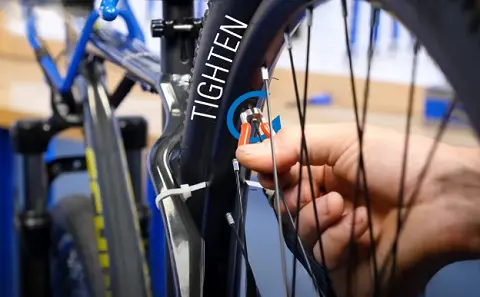
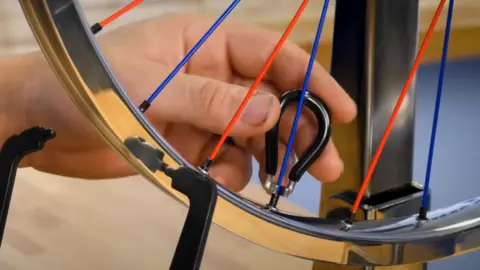
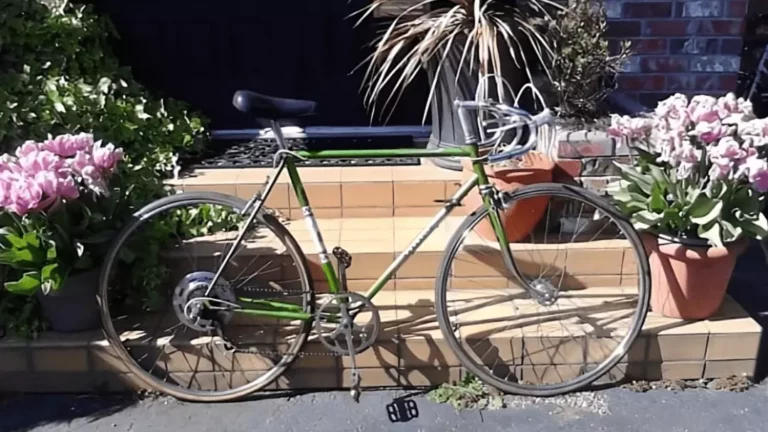
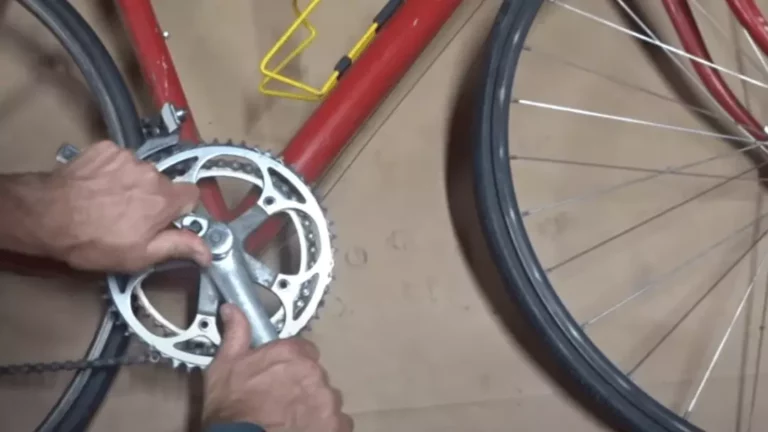
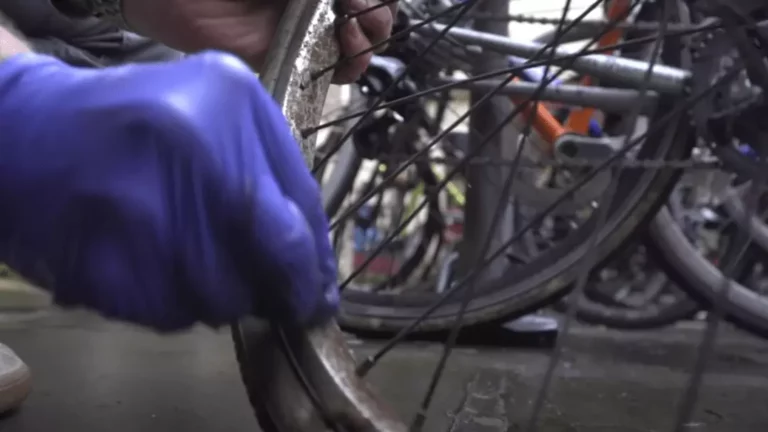
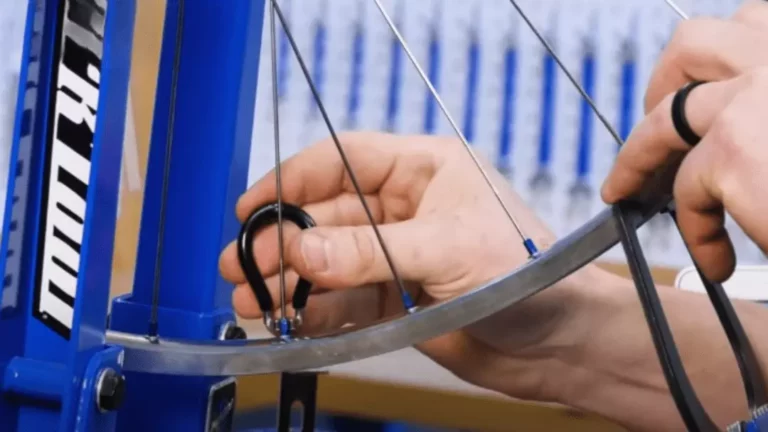

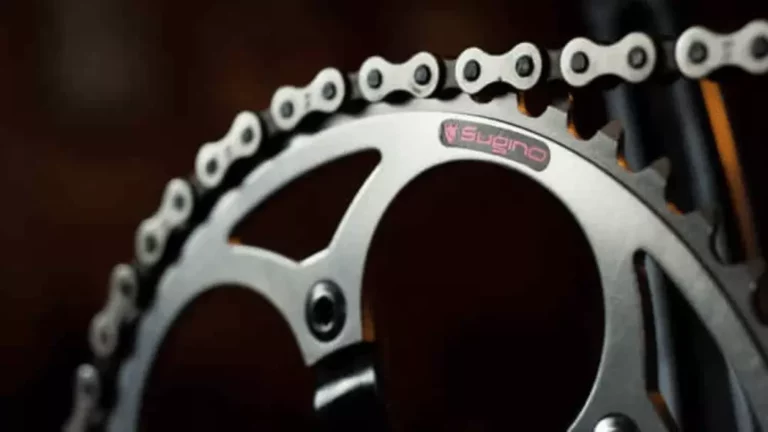
Knowing how to straighten a bent bike rim allows me to effortlessly speed up any driveways with my fixed rim. You can do it, you need: Check your bike’s spokes and rim, slowly turn the wheels and inspect the gap between your wheel and the brake disc. To straighten bike rim, start by carefully turning to the rim area where it hits brake pad, tighten the spoke opposite to the damaged area. Then, Tighten the bike spokes. Take a look at the rim’s ding, evenly tighten the two spokes across from the ding. After fixing the wheel and making the gaps even, proceed with pressing each pair of spokes in your bike rim.
Knowing how to straighten a bent bike rim allows you to effortlessly speed up any driveways with your fixed rim. You can also ditch the worry of having a bent rim that slows you down.
I’m glad you pointed out that loose wheel spokes should be repaired immediately, since a sagging spoke means the strength of your wheel is compromised. I’ve been trying to get in shape by riding my bike more, but yesterday I noticed one of the spokes was sagging a bit. Now that I know it’s a big problem, I’ll follow your advice and take my bike to get repaired soon.
I like that you talked about how you can consider visiting a bike repair shop if you notice a rattling sound everytime you’re using our bicycle. My son told me that the bicycle I gave to him last week is producing a rattling and weird sound. It’s important for me to ensure that my son will only use a bicycle that’s safe to use and working properly. I will make sure to consider all your tips.
Hi there!
My MTB’s front wheel is untrue but I dont feel any loose spokes. Am I looking at replacing the rim or is it still possible to true it? I am going to have my bike service next week but if the rim is irreparable then I can buy a new one before the service date so that they can build it up and put it on my bike.
Thanks! Waiting for a reply. 🙂
Hi David, it depends on how big the wobble is. Best to bring it in to the shop to let a mechanic assess, but rims are often salvageable.
How untrue is seriously untrue?
My road bike’s back wheel is untrue about 1/8-1/4 of an inch is this bad enough to true it immediately and not to ride it till its true? Please respond asap, Thanks
-Trent t